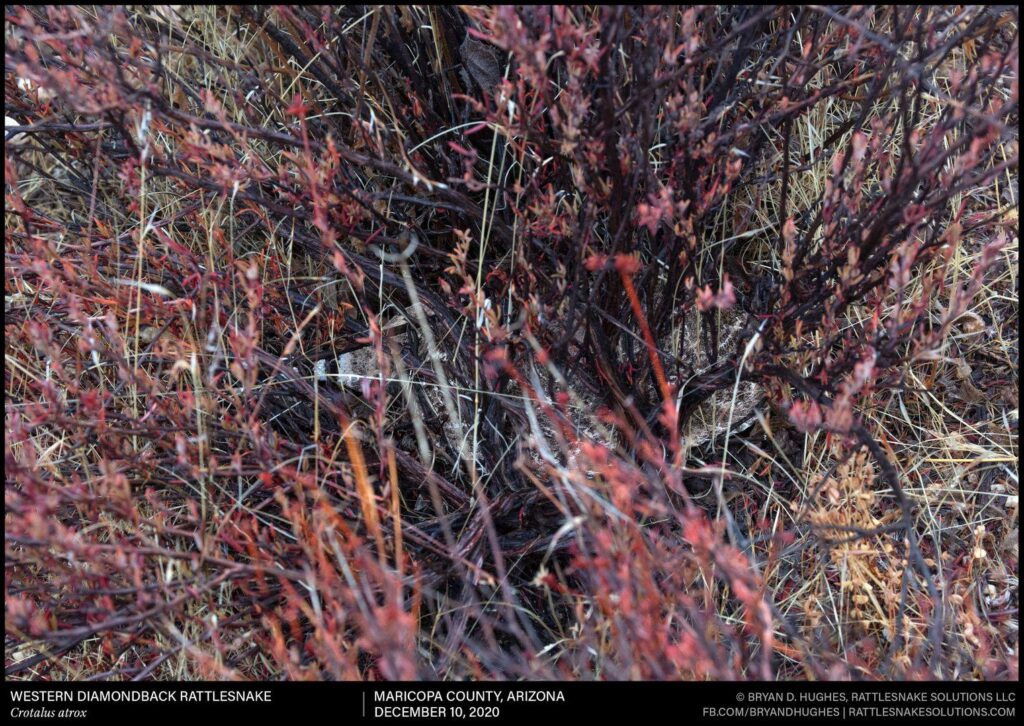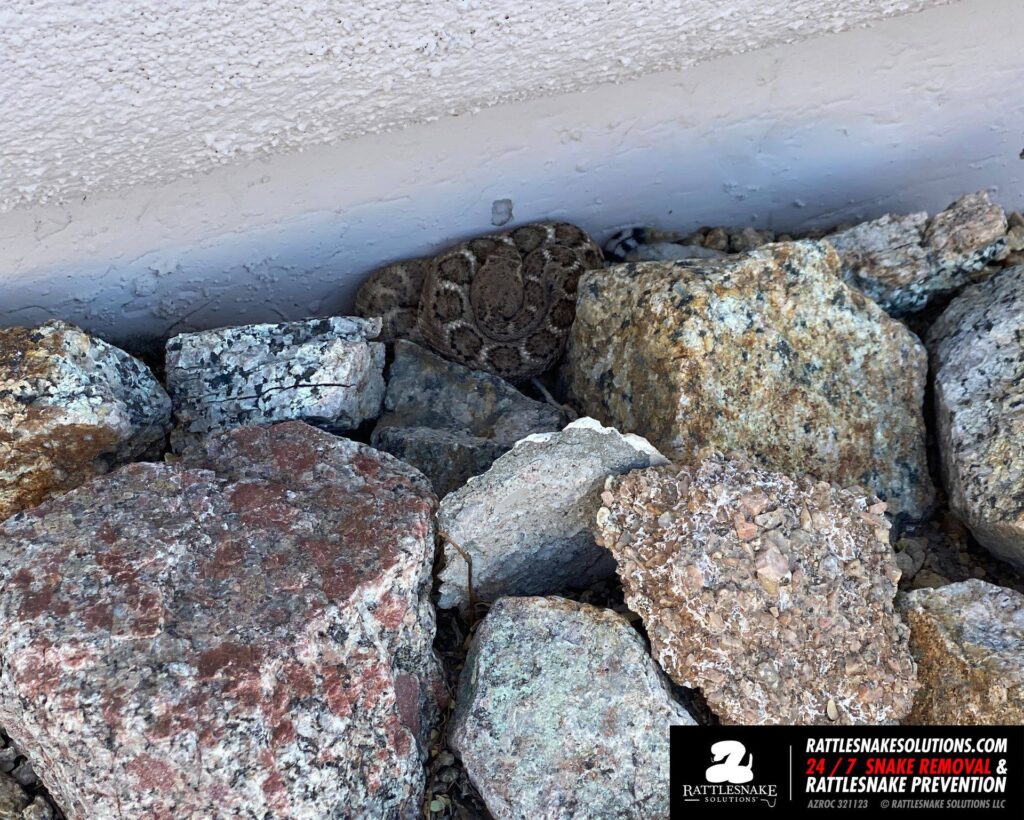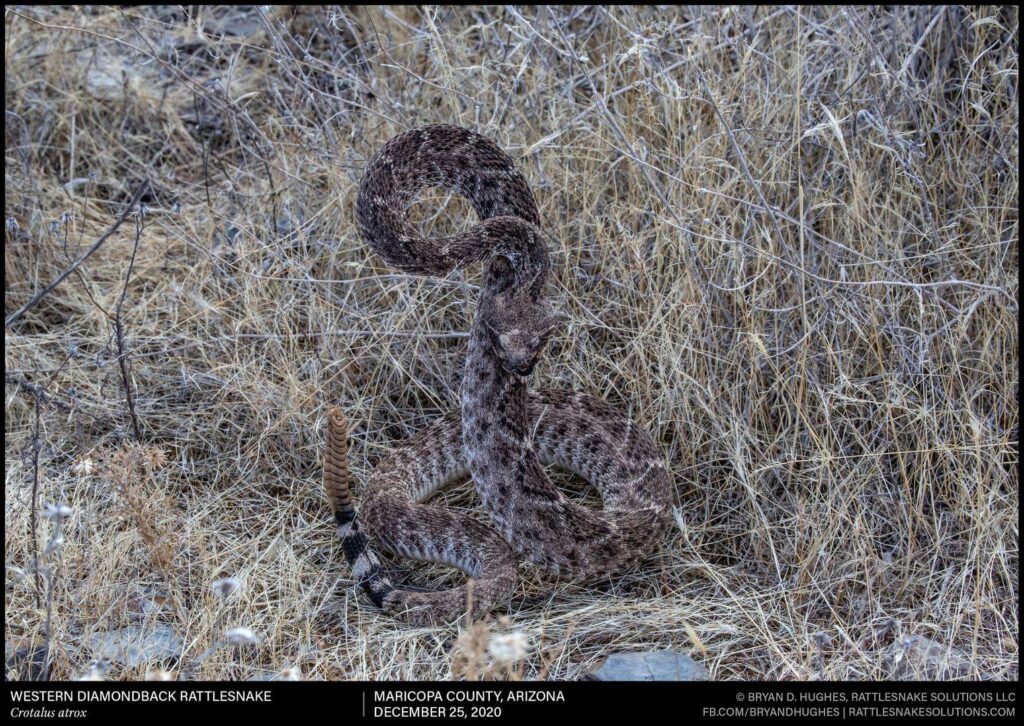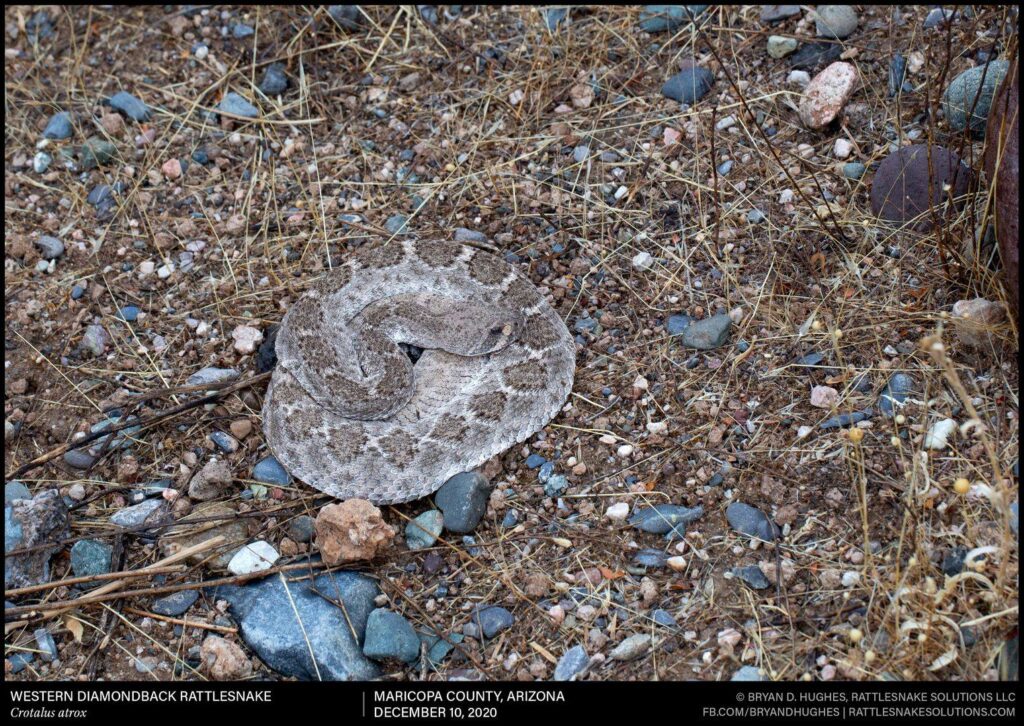Each year, we receive several calls during the weekend after Thanksgiving to capture and relocate rattlesnakes found in the garage or shed. The reason they are discovered? It’s that time of year to pull out the old Christmas decorations and shake out the spiders to once again staple a frayed fire hazard to the roof for a few weeks. As mentioned in another article, rattlesnakes love to use garages as winter dens. They’re warm (relatively), quiet, and free of predators. Even better, they’re often full of stuff that only gets touched once a year. Perfect!
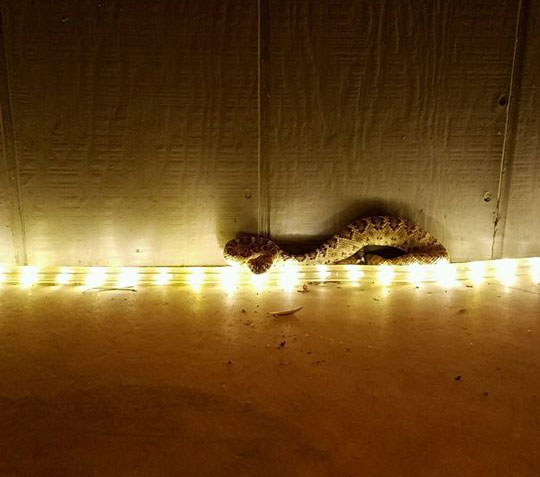
What can you do?
Just keep the usual safety precautions in mind while digging into the holiday stuff:
- Never reach into spaces that you can’t see. You may have to move boxes out to create a clear, visible space before reaching for them.
- Never bring boxes with broken sides openings in them into the home, and be extra careful sorting through them initially.
- If you do see a snake, leave it alone and call a professinal *ahem* to remove it safely and humanely.
- Proceed with assaulting the neighborhood and local powergrid on that ladder that you really should have thrown out after last year’s incident.
Remember that rattlesnakes are just trying to stay out of the cold and are not actively trying to invade your space. If a door is left open, your shed or garage becomes just a cave to the local wildlife, so if you know you had the door open for a few days during September and October, be extra cautious.
If you do see a rattlesnake, call us at 480-237-9975 and we will be there before you can say “raisins in stuffing is an abomination”. Really though, we’re open for the holiday and can help if needed.
Out of town visiting guests may need a quick refresher
If you have family or friends visiting from cooler places where a rattlesnake showing up for Thanksgiving dinner isn’t really something that happens, it may be good to quickly let the kids (and uncle Steve) know to keep an eye out and leave any snake they see alone, no matter how many tv shows they’ve watched. It’s not common to see rattlesnakes in the open during this season outside the garage or shed situations described earlier, but as our call log proves, it does happen each year. If necessary, use the threat of a very distant possibility of rattlesnakes showing up to discourage certain family members from showing up.
This is one of the most seen rattlesnake videos on YouTube at the time (2010), with the snakes found in a garage as mentioned here. I get asked about it a lot, so here’s the story. Warning: it’s not as exciting as it may seem.
First, the video. It’s best viewed with the sound way up and watching very closely.
The story
I got a call from a realtor who was trying to get this house rented out. It was in a desert neighborhood in North Scottsdale, Arizona, where rattlesnakes are quite common. I was told there were two rattlesnakes in the garage. I got my gear and headed out. When I arrived, I searched the entire structure outside, then inside, before going into the garage. I searched the entire 4 car garage, cabinets and all, before finally going back to the entryway to check one last closet. I took a peek inside, and there were 5 sleeping diamondbacks. I closed the door and did a second sweep of the garage just to make sure the capture would go smoothly. The rest, is as you have seen.
Of course this looks pretty scary, and I admit that I did jump back (you can hear me gasp), but I was not in danger.
First, most of the time that I spend working with rattlesnakes is in the dark. The top comment is always, why didn’t you just turn on the lights? To be simple, there was no power in the house and the door opener wasn’t going to work. Yes, I could have disengaged the chain and opened it manually, but really, I did not feel there was a need. There’s a whole part before I started the video recording where I did a systematic check of the entire area to make sure I knew where everybody was before actually moving in. There were 5 sleeping rattlesnakes in that very cold garage, and they weren’t going anywhere. Rattlesnakes strike at me all the time. No, it is not a safe situation, but I have enough experience to handle the situation.
Second, the phone adds some distance. The strike didn’t come nearly as close to me as it looks. I had a good 2 feet between the danger zone and myself at that time. The snakes, while not predictable, are not capable of some of the amazing feats they are often attributed. Mainly, once awake, they moved into defensive patterns, leaving me free to work with the bucket and capture them one at a time.
I regret having not handled them more gently. My concern was, only having one bucket, was to capture them as quickly as possible. While I am happy with the result, I should have put the phone down and concentrated more on the moment.
That night, after the video hit 150,000 views and hit the front page of Reddit.com, the news called me and wanted to come out and hear about what happened.
What happened to the snakes?
They were kept in similar conditions in my garage (in secure, buckets), and released to suitable habitat as soon as temperatures were such that they would be able to survive. They were all in just as good a mood as they crawled into the small cave I found for them to live in.

